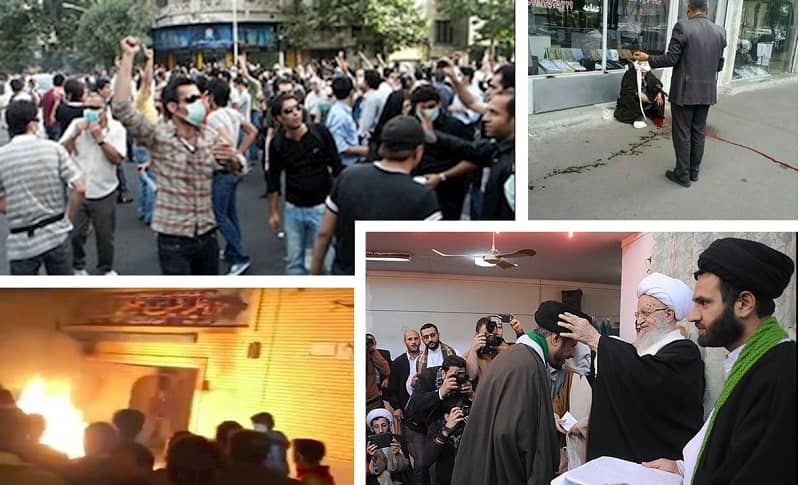
With the extent of the unrest in Iran, it is no surprise that Iranian social media has seen an uptrend of posts and videos about ordinary Iranians speaking out against the Iranian regime, and in some cases, showing their aggression and insulting the mullahs.
In a video, filmed in late December 2021 in the holy city of Qom, a woman was seen attacking two clerics as she ripped off their turbans and stomped on them. Of course, the video went viral across social media platforms, highlighting the ferocity of the unrest within Iran.
The absence of freedom of expression in the country due to the complete domination of conventional media by the regime has led to a rise in the number of people turning to social media to share their grievances and discover truths. Social media platforms have so far been more immune to the propaganda that the Iranian regime are desperate to spread to the outside world.
The National Council of Resistance of Iran (NCRI) said, “Even though, even these haven’t been spared by the thousands-strong cyber army. But at least, there is some sort of protection for the user, hiding behind several layers of VPNs, anonymous profiles, or fake identities. As ironic as it may seem, there might be more truth on Iranian social media, and, to some extent, it serves as a social gauge.”
The state-run Hamdeli newspaper discussed in their January 15 publication about the fact that due to the public dissatisfaction in the way that the country is being run, among other issues, are preventing many religious sciences students from continuing their education and enrolling in seminary courses.
Faculty member of the Institute of Islamic Sciences and Culture, Mohammad Alamzadeh Nouri spoke to the state-run website, Hawzah News echoing this fact. He stated that the number of new recruits to Iran’s seminaries is at an all-time low, and the number of dropouts is unprecedented.
On January 4, Mohammad Taghi Fazel Meybodi told the state-run media outlet Dideban that in his view, Iran’s seminaries have become ‘too politicized’, and with the growing dislike of the mullahs’ regime, seminary students are not looked upon too kindly.
He added, “The mullahs are less likely to appear in public in clerical garb. Many scholars, who want to go to the market or to their businesses, try not to go in clerical garb because people are insulting or cursing them. Today, the clergy appear less in clerical garb in public to avoid being bothered. When a cleric sits in a taxi, people start cursing him. People blame the clergy for all the problems.”
The hatred of anything remotely connected to the regime has led to academics and lower-rank officials becoming more vocal in warning the mullahs about the sources of such hatred.
Taghi Azad Armaki, a state-affiliated sociologist at the University of Tehran stated, “Compared to the last six months, the people of Tehran have suffered more psychologically. The political system has no will to solve social illnesses.”
Speaking to the Eghtesad News on January 18, former presidential candidate Mostafa Hashemitaba warned the regime that by ‘ignoring the social discontent in society’ will have ‘extremely dangerous side effects’ as people are in despair, stuck under the mounting levels of poverty in the country unable to see a bright future for themselves or their families.
On January 20, in a meeting with Akbar Kamijani, the regime’s central bank chief, Javadi Amoli, a regime-affiliated cleric in the Qom seminary warned, “Poverty is breaking the spine of the people and these folks, they will not listen to the government. Sometimes, economic problems can even bring down a big government.”